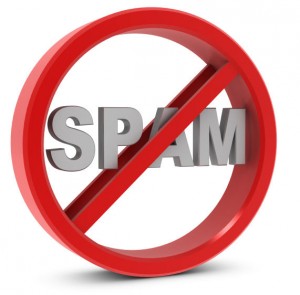Last week my email address got hacked by some evil spam bot robot that wanted to corrupt my database to promote on-line products (including a medication called Viag__). I received about 40 messages from well-meaning friends alerting me that my email address had been compromised. Some found it funny, others were annoyed, including me.
 This all happened as I was being hooked up for my fifth round of chemotherapy. I was stuck for 6 hours, not able to do anything about it. It was at that moment that I decided to dedicate this networking tip to the topic of protecting your email address from hitchhikers, spammers and other nasty robots and their creators.
This all happened as I was being hooked up for my fifth round of chemotherapy. I was stuck for 6 hours, not able to do anything about it. It was at that moment that I decided to dedicate this networking tip to the topic of protecting your email address from hitchhikers, spammers and other nasty robots and their creators.
Help! I’ve fallen and I can’t get up. After spending an hour or so on the internet researching the topic of protecting one’s email from spam crawlers, my head is spinning. Java-this, techno-that, harvester killers, what’s that? What button do I push? Who do I trust?
Safeguard your email on your web site
I was relieved to find this simple to understand web site that gave specific instructions in layman’s terms on how to stop spam bots from obtaining your email address from your web site or blog. This article written by Tina Clarke provides a few simple actions you can take to modify the Contact Us page on your web site to keep your email address safe, while still making yourself accessible to legitimate prospects and visitors.
Change your password frequently
Perhaps the simplest advice that I received from people in my network was to change my password on my email service. I realized that it had been some years since I changed my password (if ever at all). The change was simple to make and I am hopeful that this solves the problem (for now, at least).
Robert Bronson of Bronson Technologies adds some additional insight on protecting your email inbox:
If you are trying to protect your email inbox, and keep it safe the first thing you need to change is your password to something more secure and not guessable.
Change your password to something using letters and numbers throughout the password. You can use a language called L33t [or leet] and it changes vowels and other letters to numbers within words that you would use for your passwords.
The other is not to have a email address you use for business in public places, like facebook or linkedin. I recommend that everyone have several email accounts, some used only for direct business [ like @yourwebsite.com] and other public ones [ like @ aol.com or @yahoo.com] for non business critical interactions.
Other actions you can take to protect your email
Your Networking Goal for this Week:
Change your password on your email account for protection this week (heck, why not do it right now). Do this at least once per month. Keep an old fashioned hard-copy log book of your passwords to help you remember them all. While you’re at it, maybe it’s time to change out your passwords on your bank account, ATM card and other valued on-line services where your identity may be at risk. We have to stay ahead of the Spam Bots, Web Crawlers and other creeps who make a living messing up our lives.

